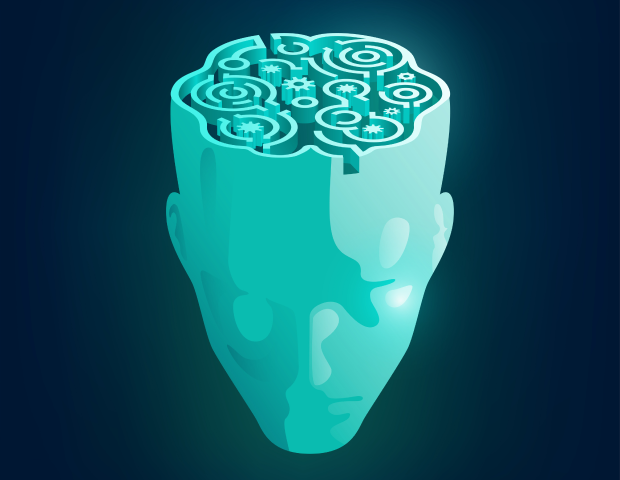Abstract: This paper is a summary of a presentation exploring the roots of Bowen theory for those interested in the theory. Dr. Michael Kerr is the Director of the Bowen Theory Academy and a leading expert with over 50 years of experience studying and applying Bowen theory. Dr. Kerr makes a compelling case that Bowen Family Systems Theory is not merely a psychological model but a robust scientific framework deeply rooted in the fundamental laws of the natural world. Synthesizing knowledge from cosmology, physics, cell biology, and modern neuroscience, he illustrates the scientific underpinnings of the theory, arguing for its place as a science of human behavior. This summary is intended for clinicians and researchers seeking a deeper understanding of the theoretical and scientific basis of Bowen theory.
Key Clinical & Theoretical Takeaways
- The concept of Two Basic Life Forces: The two forces of “individuality” and “togetherness” are framed not as emotional dynamics but as fundamental life forces. These forces parallel counterbalancing principles observed in biology (e.g., cell differentiation vs. homeostatic stability) and even physics, suggesting a universal, cross-disciplinary principle.
- Cancer as a Clinical Model for Regression: Dr. Kerr presents modern cancer research as a powerful biological model for Bowen theory’s concepts. Cancer is framed as a failure of cell differentiation and a “regression” to a more primitive, less organized state, mirroring how chronic anxiety in a family system can lead to a regression in an individual’s functioning.
- The Neuroscience of Self-Regulation: The architecture of the human brain, specifically the dynamic interplay between the emotional salience network (monitoring for threats) and the executive control network (maintaining goal-directed focus), provides a clear neurological basis for Bowen’s model of the emotional and intellectual systems.
- Determination as a Biological Imperative: Neuroscientific research has identified a specific node in the brain that functions as a “grit switch,” generating the feeling of determination. This provides a biological basis for the immense effort and perseverance required for an individual to increase their level of differentiation of self.
Part 1: Tracing the Origins from the Cosmos to the Cell
Dr. Kerr opens the presentation by framing the intellectual challenge of adopting a new scientific model. He uses the nearly 2,000-year struggle to replace the geocentric (Earth-centered) view of the universe with the heliocentric (sun-centered) model as a powerful analogy. This historical narrative, moving from Aristotle to Copernicus, Galileo, and Newton, illustrates the immense time and societal resistance involved in a paradigm shift—a journey he suggests may be analogous to the eventual, broader acceptance of Bowen theory as a science.
The core of this section is a search for the scientific “carry-overs” from the physical world to the biological and, ultimately, the human emotional world.
Key Concepts Explored:
- From Physics to Biology/The Concept of Forces: Dr. Kerr posits that the concept of forces, central to Bowen theory but largely absent from mainstream psychology, has its origins in physics. He questions what principles from the physical universe have been preserved in the functioning of living organisms, setting the stage for a natural science view of human behavior.
- Insights from Cancer Research/A Parallel to Family Systems: A significant portion of the presentation focuses on modern cancer research as a compelling parallel to Bowen theory’s concepts of differentiation and regression. Drawing on the work of Drs. Carlos Sonnenschein, Ana Soto, and philosopher of science Dr. Marta Bertolaso, he highlights several key ideas:
– Counterbalancing Forces: Dr. Bertolaso’s research identifies counterbalancing forces within organisms: one driving cell differentiation (the process by which cells become specialized) and another promoting state-holding processes (the maintenance of homeostatic stability). Dr. Kerr draws a direct parallel to Bowen theory’s two primary life forces: individuality, the innate drive to be a unique, autonomous self, and togetherness, the equally powerful drive for connection, belonging, and group cohesion.
– Blocked Ontogeny: Cancer is described not merely as a disease of uncontrolled multiplication, but as one of failed differentiation—a case of “blocked ontogeny” (impaired development). This mirrors how emotional fusion in a family system can hamper the full, natural development of an individual’s “self.” Recalling a conversation with Murray Bowen about the “war on cancer,” Dr. Kerr notes, “Cancer is a part of nature. It’s not a disease,” emphasizing its origin within natural life processes rather than as an external pathology.
– Regression: When a cell is disturbed by its environment, it can “regress” and re-acquire latent, ancestral properties of single-celled organisms, such as uncontrolled proliferation and mobility. This serves as a biological model for how chronic anxiety can lead to a regression in functioning in a human family system. - An Evolutionary Basis for Life Forces: Dr. Kerr concludes this section by conjecturing that Bowen’s two life forces are not merely psychological constructs but are deeply rooted principles that have evolved over the entire course of biological history.
Part 2: The Neuroscience of Emotion, Motivation, and Determination
The second part of the presentation delves into the brain to locate the neurological underpinnings of key concepts in Bowen theory. Dr. Kerr uses recent findings from neuroscience, particularly from Leonard Mlodinow’s book Emotional, to demonstrate how the theory’s abstract ideas are reflected in concrete brain functions.
Key Neurological Findings Discussed:
- Liking vs. Wanting: The Brain’s Motivation Circuits: He explains the crucial distinction, discovered by neuroscientist Kent Berridge, between the brain’s “liking” system (the experience of pleasure) and its “wanting” system (the motivation and desire to seek something). These are two distinct, interconnected circuits. This finding helps explain complex human behaviors like addiction, where the motivation to seek a substance (wanting) persists long after the pleasure it provides (liking) has faded.
- The Brain’s Control Networks: A Biological Basis for Bowen’s Systems: The presentation highlights the discovery of two key networks that function in tandem:
1. The Emotional Salience Network, anchored in limbic structures, which constantly monitors our internal and external environment to identify what is important or threatening.
2. The Executive Control Network, located in the prefrontal cortex, which keeps us focused on goals while ignoring distractions. Dr. Kerr emphasizes that this dynamic interplay directly reflects Bowen’s model of the emotional system and the intellectual system operating as a “working team.” - The “Grit Switch” (Determination): A Neurological Key to Differentiation: Dr. Kerr describes the remarkable discovery of a tiny node in the brain that, when stimulated, produces a pure, unadulterated feeling of determination—an urge to act and persevere. In the transcript, he notes that this feeling says, “push harder, push harder to try to get through this.” He posits that this neurological “grit switch” is essential for the difficult, goal-oriented work of increasing one’s level of differentiation of self, which requires sustained effort in the face of emotional resistance from the family system.
Highlights from the Audience Discussion
The presentation concluded with a Q&A session that further clarified and expanded upon the concepts:
- Chronic Anxiety and Regression: It was discussed that chronic anxiety can be understood as the force that triggers a regression to a more primitive, “latent” way of functioning that was once adaptive for survival but is no longer helpful in the current context.
- The Power of a Guiding Theory: Participants noted that the historical astronomy example shows how having a correct theory (like Bowen theory) allows for the proper organization and understanding of countless data points from other scientific fields.
- Determination and Health: The role of determination was linked to recovery from serious illness, suggesting that a focused, biologically-based mindset is a critical component of health outcomes.
- Defining Chronic Anxiety: Dr. Kerr and participants defined chronic anxiety not just as a subjective feeling, but as a physiological stress response resulting from a constant state of vigilance that is programmed by one’s family of origin.
In summary, Dr. Kerr’s presentation makes a powerful and groundbreaking case that Bowen Family Systems Theory is not an isolated psychological model but a robust scientific framework that aligns with fundamental principles observed across the entire spectrum of nature. His work challenges the field to move beyond a purely psychological lens and to consider human behavior as an outcome of deep, natural processes that connect us to the entire history of life.
Do you like past BTA webinars we are making available on our website? Also, here is a link to an educational program of the Kansas City Family Center using past webinar videos: https://www.kcfamilysystems.org/webcast_series/




